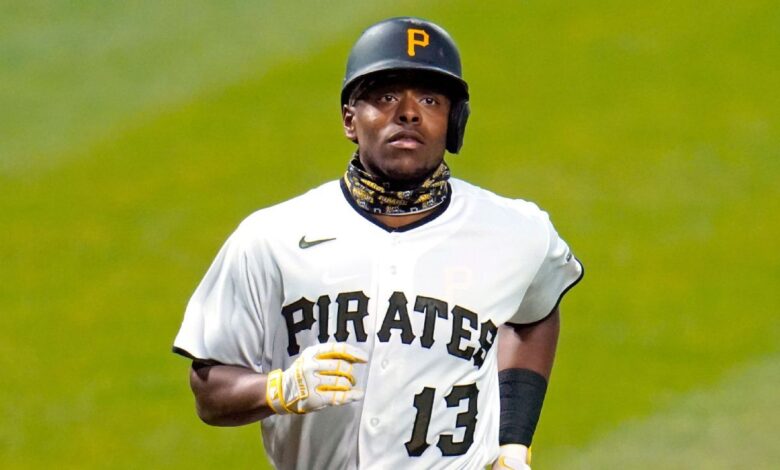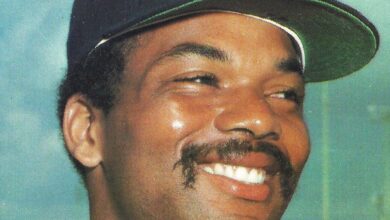
With a three-game sweep of the St. Louis Cardinals over the weekend extending their winning streak to five, perhaps the Pittsburgh Pirates are turning the corner in June. Let’s look at what happened to the Bucs in May.
Frankly speaking
A friend reminded me of the lyrics from the Frank Sinatra song “That’s Life”* as it relates to these Pirates: You’re riding high in April, shot down in May.
After a 20-9 start to the season in March and April, the Pirates were 8-18 in May. At the start, I note they played higher-caliber opponents in May. The opposition in those first 29 games had a .477 winning percentage. In May, the Pirates faced teams with a .557 winning percentage. Even so, there were plenty of culprits in the Pirates’ collapse.
The potent offense of April all but disappeared in May. The Pirates scored 5.4 runs per game in March and April and a mere 3.3 runs per game in May. The team batting line read .264/.343/.449 in March and April as opposed to .224/.299/.356 in May. Lacking much power, the Pirates’ rely on a high on-base percentage to generate their offense. This aspect was missing in May, as we saw increased chases and less plate discipline.
Most alarming was the batting average with RISP, which, for the novice, stands for runners in scoring position, or in other words, runners on second and third bases, unless the batter is Aaron Judge, who’s in scoring position from the batter’s box. During their 20-8 start, the Pirates’ RISP batting average was .312, which ranked third in all of Major League Baseball. As I write this, their batting average with RISP is .268, which ranks eighth. It’s still not bad but a significant drop in just one month.
Ke’Bryan is key
Recognizing it’s unfair to single out any one player, but with most of the Pirates’ hitters producing in line with expectations despite May slumps, one hitter who needs to pick it up is Ke’Bryan Hayes. He finished May hitting .221/.273/.348, 2 HR and 19 RBIs for the year. Statistically, he’s the best defender among third basemen and the fifth-best among all fielders in baseball. I don’t think Hayes evolving into a .270 hitter with homers in the teens each year is out of the question. With his elite defense, that would be good enough.
When he arrived on the scene in 2020, I saw a hitter with a good stroke to the opposite field. I’m surprised to see that in 2023, he’s going to the opposite field 25 percent of the time, in line with his career percentage and well above the major-league average. Despite this fact, the naked eye has seen a batter who’s trying to pull too many pitches.
Hayes has a good hard-hit rate of 47.7 percent. The lack of production would be explained by his 43.6 percent ground-ball rate. He’s begun June with key home runs in each of the first two games, his third and fourth of the year, leading the Pirates to victories over the Cardinals. Both homers were hit off curve balls. In these games, he didn’t look so pull-happy. In waiting a bit longer to launch his swing, he’s in a better position to turn on slower pitches, hence the two homers. It’s a small sample size, but maybe Hayes is ready to turn it around.
Oh, Henry!
Meanwhile, Pirates fans clamor for catcher Henry Davis, the 2021 number one pick tearing it up with double-A Altoona. As of this writing, he’s hitting .284/.433/.547, 10 HR and 27 RBIs. He was promoted to triple-A Indianapolis on Sunday. Austin Hedges, the Pirates’ current starting catcher, is hitting .179/.240/.221. Naturally, the fans see the substitution of Davis for Hedges as the cure for what ails the offense. Sorry, Pirates fans, but I don’t expect that to happen any time soon. The Pirates value Hedges’s pitch-framing and game-calling skills. Every catcher the Pirates have had under the Ben Cherington regime has had those skills, at the expense of offense. I’m guessing Davis must develop them before he advances to the big time.
On the mound
Pitching must share the blame for the Pirates’ failures in May. Pirates starters’ ERA rose from 3.83 to 4.52 in May. Over that same period the bullpen’s ERA increased from 3.10 to 4.16. Some of the bullpen’s performance can be traced to the losing record in May, which kept David Bednar and Colin Holderman off the field and led to more innings by the so-called front end of the bullpen. Still, the bullpen lost some games that could have been won.
Again, it’s not fair to point to one guy, but let’s look at Robert Stephenson. On May 10 at home against Colorado, Stephenson entered a tie game in the seventh inning to face the bottom of the Rockies’ order. A walk, a single, another walk and another single later, the Rockies had a 4-3 lead they would not lose.
At home again on May 20, this time against the Arizona Diamondbacks, the Pirates were leading, 3-2, after six innings thanks to another sparkling mound performance by Mitch Keller, who has quietly emerged as the staff ace. In a controversial move, manager Derek Shelton removed Keller and gave the ball to Stephenson for the seventh, despite Keller pitching with an extra day’s rest and having thrown only 84 pitches. Stephenson promptly surrendered a sharp single to Lourdes Gurriel Jr. and a long homer to Pavin Smith and the Pirates had another 4-3 loss.
Finally, on May 28 in Seattle, Stephenson was brought in to pitch the 10th inning of a 3-3 game. With two outs and the automatic runner on third, Shelton ordered an intentional walk to Jarred Kelenic so Stephenson could face the right-handed Eugenio Suarez. A long-time Pirates nemesis, Suarez cracked a long homer to deep left field to send Mariners’ fans home happy with a 6-3 win.
A salary dump?
Turn Stephenson’s 0-3 record around and instead of being 8-18 for May, the Pirates would be a more palatable 11-15. On Friday, the Pirates traded him to the Tampa Bay Rays in exchange for double-A shortstop Alika Williams. On the surface, it looks like the Pirates simply dumped an ineffective, high-salaried reliever for a prospect. That they did, but I think there’s more to it than that.
Shortstop has been a revolving door for the Pirates ever since Oneil Cruz‘s injury in his ninth game. Rodolfo Castro took over and did well for a while but eventually played himself out of the position. Chris Owings was called up to stabilize the position. A platoon of left-handed hitting Tucupita Marcano and the right-handed Owings was employed at shortstop. Despite not having played much shortstop in the majors, Marcano has fielded above expectations and is currently batting .267/.325/.457. Meanwhile, Owings was batting a mere .160/.160/.160. As Marcano grew, Owings shrank. The offense suffers with Hedges and Owings in the lineup at the same time. Owings didn’t help his cause much when, on May 24 against the Texas Rangers, he failed to bunt a runner to third in a 3-2 loss. He was designated for assignment on Saturday.
Or was it more?
My guess is if the Pirates like what they see in Williams, he may be called up to play shortstop. There are no other internal options. The Pirates’ sixth-ranked prospect, shortstop Liover Peguero, 22, is in double-A and does not appear ready for the big squad. The Pirates’ own website praises his range and arm strength while stating “he’s struggled with defensive consistency” and chases too many pitches at bat. This may have necessitated the deal for Williams.
On the other hand, Williams, 24, a 2020 first-round draft pick by the Rays out of Arizona State, is considered a plus defender with above-average range and arm strength. In double-A, he was hitting .237/.314/.417, 5 HR and 23 RBIs. That may be his ceiling offensively, although scouting reports indicate there may be a little more power there. He has speed and a high contact rate, striking out only 19.4 percent of the time. If the Pirates’ instructors can harness a bit more offense from Williams, we might see him in Pittsburgh soon. It seems he’s ready defensively. Marcano could switch to the more familiar second base, a position nobody has seized yet. I’ll bet that’s what Cherington is quietly contemplating. We’ll find out.
*Written by Dean Kay and Kelly Gordon, the original version was recorded by Marion Montgomery in 1963. Sinatra recorded his version in 1966 after hearing O.C. Smith‘s rendition in 1965.





